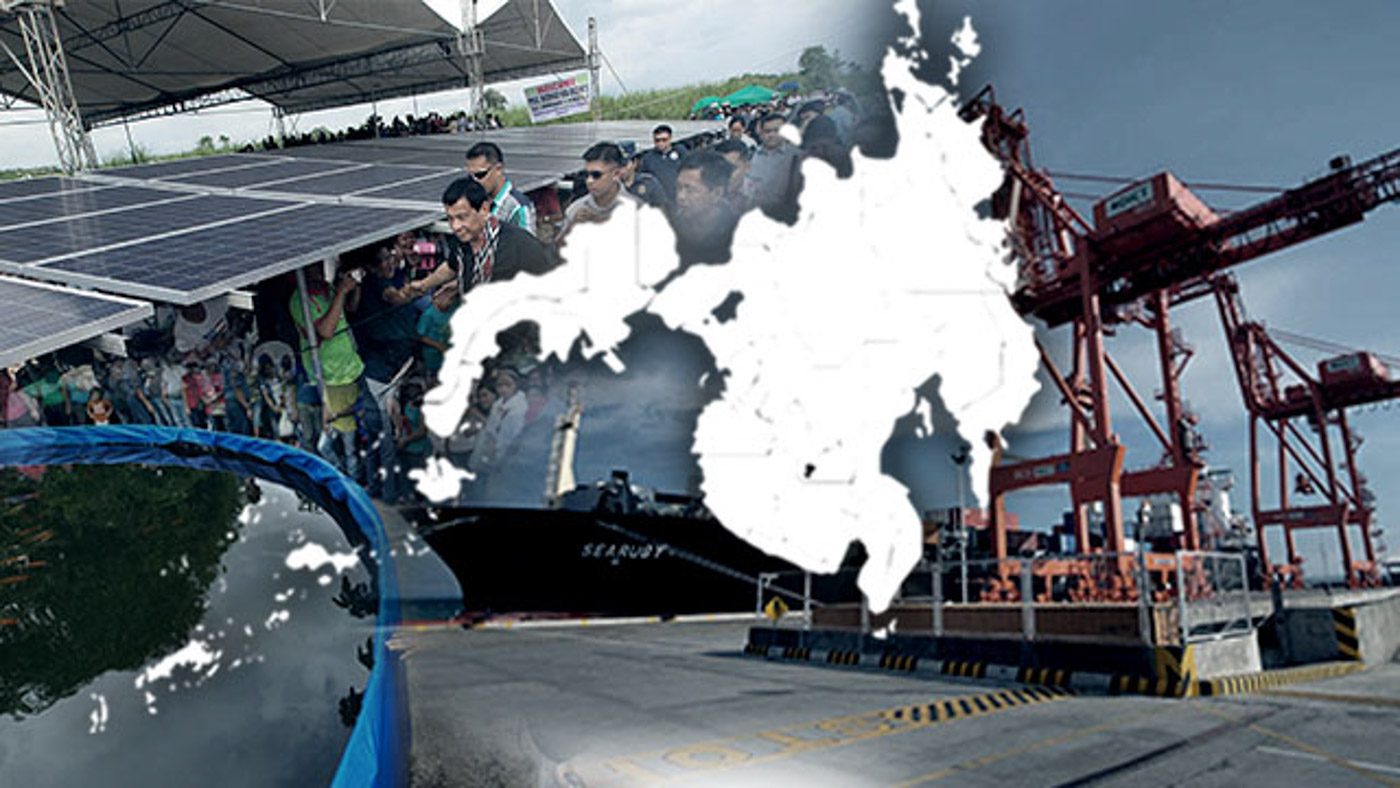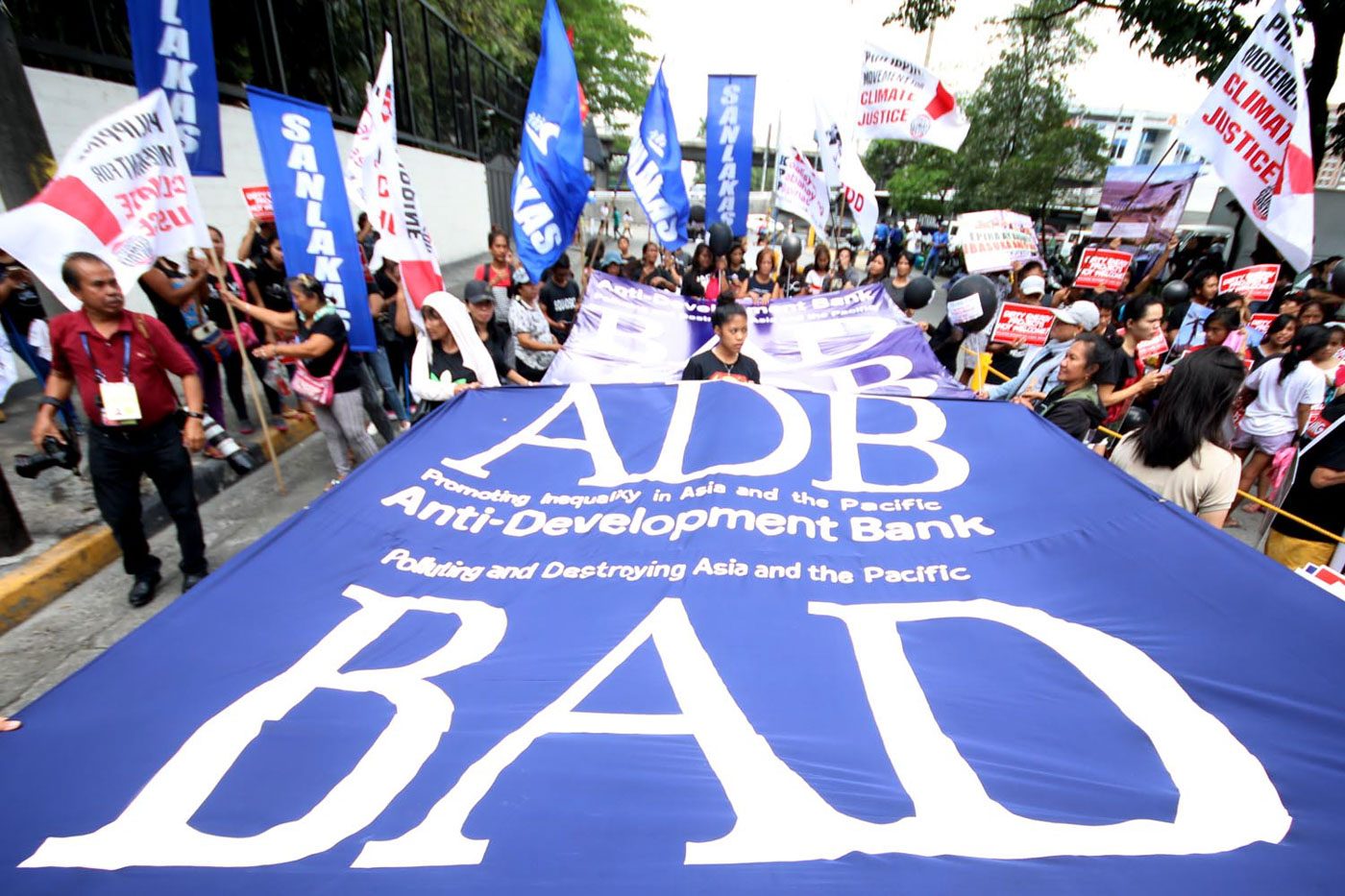SUMMARY
This is AI generated summarization, which may have errors. For context, always refer to the full article.

MANILA, Philippines – Inside the high-profile 51st Asian Development Bank (ADB) Annual Meeting, its president Takehiko Nakao vowed to help fund more infrastructure and developmental projects in Mindanao, in a bid to promote peace in the region. Outside the gates of the multilateral lender’s headquarters, protesters slammed its supposed “anti-poor and anti-development” ways.
“We want to invest more in Mindanao because for the peace, sustaining peace in Mindanao, we have to develop Mindanao in the broader sense…. This comes to the major projects in the Philippines,” Nakao said in a briefing on Thursday, May 3.
Back in December 2017, the ADB approved a $380-million loan to the Philippine government, for the improvement of Mindanao’s road network and economic development.
This marked the Manila-based multilateral lender’s largest loan for the island region, which aims to develop around 280 kilometers of roads and bridges.
Nakao said his office is also willing to help finance major infrastructure deals in Metro Manila, particularly railways.
“We need to support countries – how to mitigate this traffic,” the ADB chief said. (READ: Amid high inflation, Bangko Sentral ready to raise interest rates ‘if needed’)
This comes amid Socioeconomic Planning Secretary Ernesto Pernia’s call for the ADB to extend more financial aid as the Philippine government carries out its ambitious infrastructure program.
“By definition, it’s a must for all of us, for ADB and the countries, to improve infrastructure. The right kind of infrastructure in the right places and for the right members of society who need them,” Pernia told reporters in a separate briefing.
In October 2017, the ADB granted the Philippines a $100-million loan for the Infrastructure Preparation and Innovation Facility, which aims to accelerate the delivery of high-quality public infrastructure.
In April 2017, the Duterte administration unveiled Dutertenomics, an ambitious economic plan whose main feature is the Build, Build, Build infrastructure program.
With a whopping P8.4 trillion estimated to be spent on Build, Build, Build in 5 years’ time, the program promises to usher in a golden age of infrastructure.

‘Anti-poor’?
While finance ministers, central bank governors, as well as representatives from the academe and multilateral agencies networked inside the ADB headquarters, some civil society organizations demanded an end to what they described as “anti-poor and anti-development strategies.”
“Due to the history of ADB’s conditionalities forcing countries to resort to the privatization of basic services, the region’s impoverished and marginalized suffer through the deterioration of the quality and accessibility of basic services and sharp increases in costs,” Sanlakas secretary general Aaron Pedrosa said. (READ: Rising gas, food prices seen to push PH inflation faster)
Asian Peoples’ Movement on Debt and Development coordinator Lidy Nacpil cited the bank’s role in the introduction of coal-fired power plants in the Philippines alone through the implementation of the Electric Power Industry Reform Act (EPIRA) in 2001.
“The ADB seeks civil society’s input into Strategy 2030, the long-term strategic framework that replaces Strategy 2020. But it makes no significant departure from before,” Nacpil said.
“Even then, there was already recognition that the bank’s agenda should integrate environmental sustainability and commitments were made to support the UN Sustainable Energy for All Initiative by way of genuinely cleaner energy investments worth $2 billion every year,” she added.
Citing a 2017 report, the ADB said the share of its operations supporting climate change mitigation and adaptation rose to 49% from 2015 to 2017, exceeding the 45% target for 2020.
“Climate change finance, including external sources mobilized by ADB, reached a record $5.16 billion in 2017. This puts ADB in a good position to achieve its $6-billion annual climate financing target by 2020,” the ADB said in a statement.
Established in 1966, the ADB is owned by 67 members – 48 of them from the Asia Pacific region. In 2017, ADB operations totaled $32.2 billion, including $11.9 billion in cofinancing. – Rappler.com
Add a comment
How does this make you feel?
There are no comments yet. Add your comment to start the conversation.